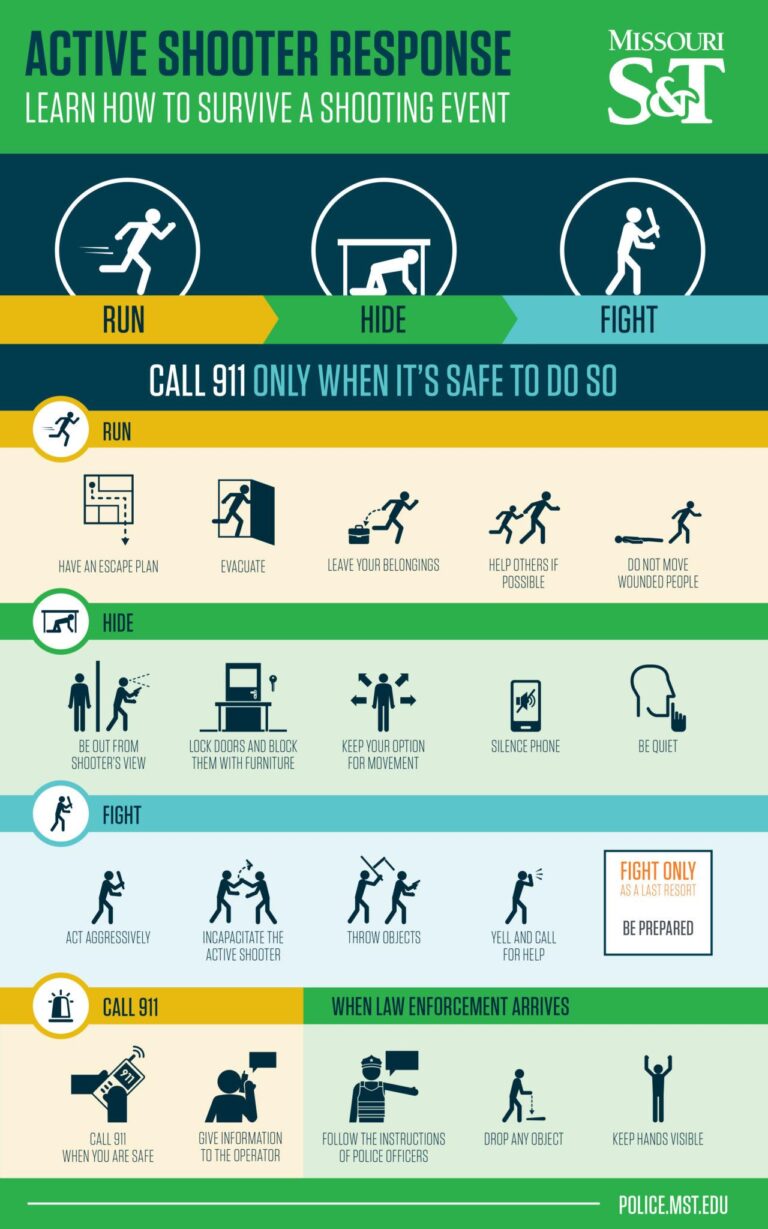Table of Contents
- Preparing Mentally and Physically for an Active Shooter Situation
- Recognizing Warning Signs and Assessing Your Environment
- Executing the Run Hide Fight Strategy Effectively
- Communicating and Coordinating with Authorities During and After the Event
- To Wrap It Up
Preparing Mentally and Physically for an Active Shooter Situation
Developing the right mindset is crucial when facing a life-threatening event. Train your brain to stay calm under pressure by practicing controlled breathing and visualization techniques. Start by mentally rehearsing scenarios where you quickly assess your surroundings, identify escape routes, and make split-second decisions. This mental conditioning helps reduce panic and increases your chances of reacting effectively if danger strikes. Remember, clarity of thought is your most valuable tool in any crisis.
Physical readiness matters just as much as mental preparation. Engaging in regular exercise to maintain cardiovascular fitness and agility can make a difference when you need to run, hide, or defend yourself. Simple drills, like quick sprints or rapid change of direction exercises, can enhance your ability to move swiftly and decisively. Additionally, familiarize yourself with basic self-defense moves and maintain a posture of alertness in your daily environment. Key areas of focus include:
- Situational awareness: Always be aware of exits, crowd density, and suspicious behaviors.
- Physical conditioning: Building stamina and strength to improve escape or confrontation capabilities.
- Stress inoculation: Deliberately exposing yourself to stressful scenarios to improve reaction times.
Recognizing Warning Signs and Assessing Your Environment
It is crucial to stay vigilant by identifying early alerts that could signal an impending violent situation. Notice any unusual behavior such as aggressive gestures, verbal threats, or erratic movements. Additionally, be aware of unattended bags or items in public spaces, and trust your instincts if something feels off. Recognizing these subtle cues quickly can provide the precious seconds needed to react effectively.
Assessing your immediate surroundings enhances your ability to choose the best course of action. Look for accessible exits, potential hiding spots, and objects that could serve as barriers. Keep in mind these key points when evaluating your environment:
- Exit routes: Identify multiple escape paths and ensure they are clear.
- Cover options: Locate solid objects such as desks, walls, or heavy furniture that can shield you.
- Accessibility: Avoid areas with limited visibility or cramped spaces that reduce mobility.
Executing the Run Hide Fight Strategy Effectively
When confronted with an active shooter situation, prioritizing your actions can be the difference between life and death. Running should always be your first response if there is a safe and accessible route away from the threat. Quickly evacuate the area, encouraging others to come with you once you’re certain it’s safe to do so. Leave all personal belongings behind to expedite your escape. Look for multiple exit points and use a zigzag pattern if confronted to make yourself a harder target. Once at a safe location, call 911 immediately and provide clear, concise information.
If running isn’t an option, your next best choice is to hide effectively. Choose a location that offers protection and concealment, such as a locked room or behind heavy furniture. Silence your phone, turn off lights, and remain absolutely quiet. Barricade doors with heavy objects and avoid windows or glass doors. The goal is to make it as difficult as possible for the shooter to find or access you. As a last resort, if confronted directly, be prepared to fight back with whatever you have at hand-use your body weight and aim for vulnerable areas. Remember, taking assertive action against the attacker can increase your chances of survival.
Communicating and Coordinating with Authorities During and After the Event
Effective communication with law enforcement and emergency responders is crucial both during and after an active shooter event. When law enforcement arrives, follow their commands calmly and promptly, keeping your hands visible at all times to avoid any misunderstanding. Use concise and clear language to relay important information such as the location of the shooter, number of victims, or any suspicious activity you observed. Remember, your ability to provide accurate details can significantly influence the response efforts and help contain the situation quickly.
After the immediate threat has been neutralized, maintaining coordination with authorities remains essential. Be prepared to provide statements or assist in identifying individuals if requested. Additionally, follow official updates and guidance disseminated through verified channels and participate in any debriefings or counseling offered. Some key actions to keep in mind include:
- Staying available: Keep your phone on and accessible for follow-up questions.
- Reporting concerns: Notify authorities about any lingering threats or suspicious behavior post-event.
- Supporting investigations: Provide any evidence you may have captured, such as photos, videos, or notes, in a format requested by officials.
To Wrap It Up
Staying informed and prepared is crucial when it comes to responding effectively in an active shooter event. While no one wants to find themselves in such a situation, understanding the key steps-running, hiding, and as a last resort, defending-can make all the difference. Remember, your safety depends not only on quick thinking but also on staying calm and focused under pressure. Share this knowledge with your family, friends, and colleagues to help build safer communities. Because when it comes to active shooter scenarios, preparedness isn’t just a choice-it’s a necessity. Stay aware, stay ready, and stay safe.Check Our Other Blogs
- StunGun – Your Trusted Source for Stun Guns, Laws, and Self-Defense Tips
- PepperSprayLaws – Your Trusted Resource for Pepper Spray Information
- StunGunLaws – Your Trusted Guide to Stun Gun Legality and Safety



